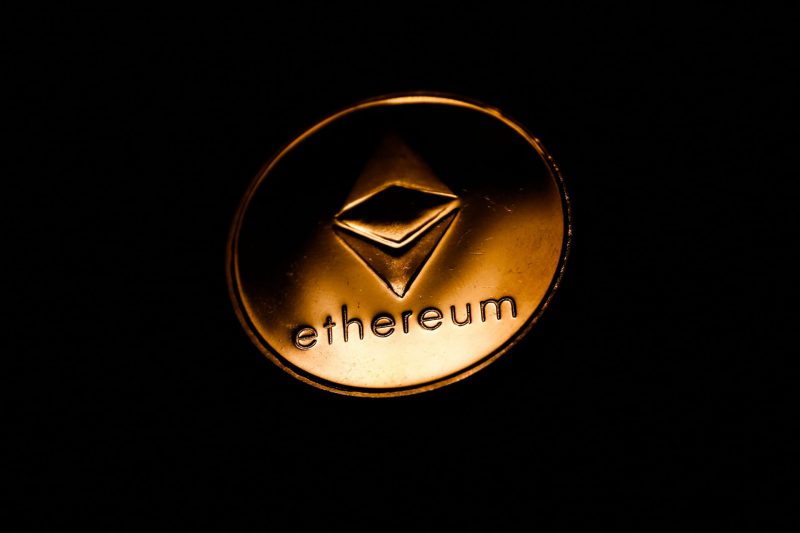How Ethereum Miners Can Adapt After the Merge
Ethereum, the second-largest cryptocurrency by market capitalization, is undergoing a significant transformation known as “the merge.”
This process involves transitioning from the current proof-of-work (PoW) consensus mechanism to a proof-of-stake (PoS) system.
While this upgrade promises improved scalability, security, and energy efficiency, it poses challenges for Ethereum miners who rely on the PoW model to validate transactions and earn rewards.
This article will explore how Ethereum miners can adapt and thrive in a post-merger environment.
We will delve into the details of the Ethereum merge, the implications for miners, the future of mining pools, and strategies miners can employ to navigate this transition successfully.
Also read: How Much Ethereum is There?

The Ethereum Merge: Transitioning from Proof of Work to Proof of Stake
Understanding Proof of Work (PoW)
Proof of work is a consensus mechanism widely used in blockchain networks, including Ethereum. In a PoW system, miners compete to solve complex mathematical puzzles using computational power.
The first miner to solve the puzzle and validate a block of transactions is rewarded with newly minted coins and transaction fees.
PoW has been instrumental in securing the Ethereum network and enabling the execution of smart contracts.
However, it has inherent drawbacks, including high energy consumption, scalability limitations, and centralization risks.
The Flaws of PoW and the Need for the Merge
One of the main criticisms of PoW is its energy-intensive nature.
Ethereum mining, which relies on powerful graphics processing units (GPUs), consumes substantial electricity.
This energy consumption has raised concerns about the environmental impact of blockchain networks and the sustainability of PoW-based cryptocurrencies.
PoW’s scalability limitations have become increasingly apparent as Ethereum’s popularity and transaction volume have grown.
The network’s limited throughput and high transaction fees have hindered its ability to handle a broader range of decentralized applications.
To address these issues, Ethereum developers initiated the merge to replace PoW with a more energy-efficient and scalable consensus mechanism: proof of stake (PoS).
Introducing Proof of Stake (PoS)
Proof of stake is an alternative consensus mechanism that relies on validators who hold and lock up a certain amount of cryptocurrency as collateral, or “stake.”
Validators are chosen to validate transactions and create new blocks based on the proportion of their stake relative to the total staked in the network.
Unlike PoW, PoS does not require miners to solve complex puzzles or consume large amounts of energy. Instead, validators are selected based on their economic stake in the network, reducing the computational burden and energy consumption associated with mining.
PoS brings several advantages to the Ethereum network, including improved scalability, reduced energy consumption, and enhanced security.
Validators have a vested interest in maintaining the network’s integrity, as any malicious behavior or attempt to attack the network would result in the loss of their staked funds.
Also read: Is Crypto Mining Dead?
The Implications for Ethereum Miners


Mining Infrastructure Companies Seek Alternatives
As the Ethereum merge approaches, mining infrastructure companies, such as Hive Blockchain and Hut 8 Mining Corp., proactively seek alternative strategies to adapt to the changing landscape.
These companies recognize the need to pivot away from Ethereum mining and explore new opportunities in the cryptocurrency ecosystem.
Hive Blockchain Explores Other Mineable Coins
Hive Blockchain, a publicly traded company, plans to leverage its existing mining infrastructure and expertise to mine other cryptocurrencies.
By analyzing alternative tokens that can be mined with their graphics processing units (GPUs), Hive aims to continue generating revenue from mining operations even after Ethereum transitions to PoS.
The company’s strategy involves redirecting its mining capacity from Ethereum to other GPU-mineable coins. This approach allows Hive to utilize its computational resources effectively and maintain profitability in a post-Merge environment.
Hive’s significant processing power has yielded impressive results, with its GPUs producing approximately 97 ETH per day during August 2022.
Hut 8 Mining Shifts Focus to Machine Learning and AI
In contrast to Hive Blockchain, Hut 8 Mining Corp. has shifted its focus away from mining altogether.
The company recognizes the diminishing relevance of PoW mining in a PoS-dominated Ethereum network and seeks to explore new business opportunities.
Hut 8 Mining plans to leverage its computing infrastructure and expertise in machine learning and artificial intelligence (AI) to provide alternative services to its customers. By diversifying its offerings and capitalizing on emerging technologies, Hut 8 Mining aims to ensure long-term sustainability and growth beyond traditional mining operations.
As part of this strategy, Hut 8 Mining has partnered with companies like Zenlayer, a cloud service provider focused on gaming, media, and blockchain.
This collaboration allows Hut 8 Mining to utilize Zenlayer’s edge cloud platform, enhancing its ability to deliver efficient and scalable applications to customers.
The Future of Mining Pools
The Decline of Ethereum Mining Pools
The transition to PoS not only affects individual miners but also mining pools, which have played a crucial role in PoW-based networks like Ethereum. Mining pools allow miners to combine their computing power and share rewards based on their proportional contributions.
However, with Ethereum’s shift to PoS, the concept of mining pools is likely to become less relevant. In a PoS system, miners do not need to compete against each other to solve puzzles and validate transactions. Instead, validators are selected based on their stakes, and rewards are distributed accordingly.
With PoS making Ethereum energy-efficient, mining pools could lose importance for pooling computational resources.
In PoS, validators secure the network with their stake and get rewards based on their stake proportion, with no external collaborations.
The Rise of Ethereum Staking Pools


Mining pools might shrink post-merge, but staking pools will likely rise, fostering new network collaboration.
Staking pools boost chances for validators by merging stakes, raising potential rewards.
Staking pools operate similarly to mining pools, but participants pool their staked funds instead of combining computational power. This collaborative approach enables small-scale stakeholders to participate in network validation and earn otherwise inaccessible rewards.
Staking pools can also provide additional benefits, such as regular payouts, simplified participation, and enhanced security through collective risk management.
These pools offer a way for Ethereum holders to passively earn rewards without needing expensive mining equipment or technical expertise.
Conclusion
In conclusion, the Ethereum merge represents a significant shift in the cryptocurrency landscape, particularly for Ethereum miners.
As Ethereum shifts to PoS, miners must adjust and innovate for sustained profitability in the post-merger era.
Companies like Hive Blockchain and Hut 8 Mining are proactively pivoting and seeking new opportunities in mining.
Miners can redirect capacity to other cryptos, explore AI, and join new blockchains for ongoing success.
The decline of traditional mining pools and the rise of staking pools further emphasize the changing dynamics of network validation.
Miners should stay informed about the evolving consensus mechanisms and explore collaborative opportunities within the Ethereum ecosystem and beyond.
Ethereum miners thrive by embracing changes, seeking new opportunities, and sustaining their essential role in the crypto world.





